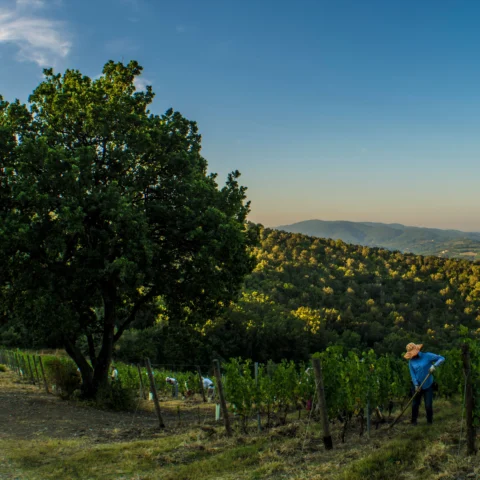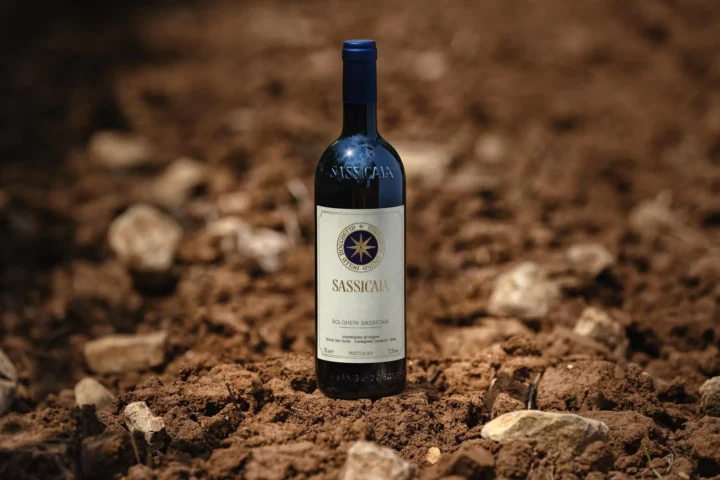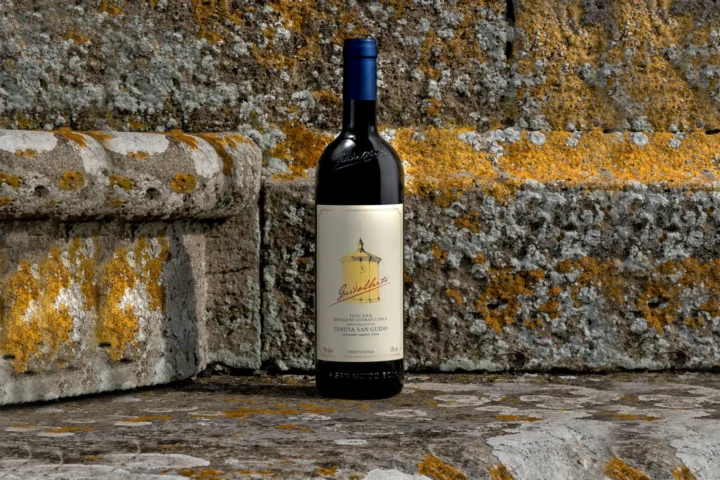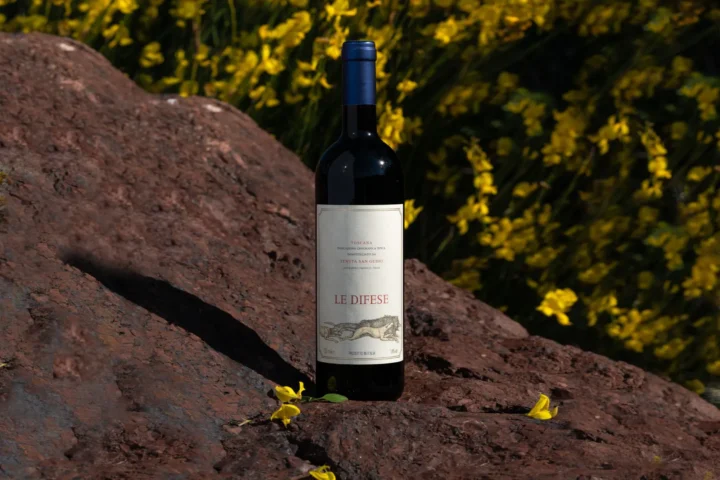
Tenuta San Guido
Tenuta San Guido is a legendary estate located in Tuscany in the Bolgheri area and extends between the coast and the rolling hills of the Maremma. The vineyards are planted up on those hills and have even been given their own DOC – Bolgheri Sassicaia, the first, and so far only case in Italy of a DOC contained in a single estate.
History of the Estate:
Tenuta San Guido’s journey to becoming one of the world’s most sought-after fine wines is largely owed to the vision and dedication of Mario Incisa della Rocchetta. The estate’s origins trace back to his wife’s family, who had owned land in Bolgheri since 1800. The name “Sassicaia”, meaning “place of many stones,” reflects the gravelly soil reminiscent of the Médoc region in France.
 Mario Incisa della Rocchetta planted Cabernet Sauvignon and Merlot vines on this land and enlisted the expertise of Piero Antinori’s winemaker, Giacomo Tachis. Tachis played a pivotal role in shaping Tenuta San Guido’s winemaking philosophy and techniques.
Mario Incisa della Rocchetta planted Cabernet Sauvignon and Merlot vines on this land and enlisted the expertise of Piero Antinori’s winemaker, Giacomo Tachis. Tachis played a pivotal role in shaping Tenuta San Guido’s winemaking philosophy and techniques.
From 1945 to 1967, Sassicaia remained a strictly private product, reserved exclusively for family and friends. The 1968 vintage was the first to appear on the market wich garnered universal acclaim. Over time, it has become recognised as one of the world’s finest Cabernet Sauvignon wines.
The Terroir:
Tenuta San Guido is the only winery to have vineyards suitable for claiming the DOC Bolgheri Sassicaia, a type created as a sub-zone of the DOC Bolgheri back in 1994 and converted to an autonomous DOC in December 2013.
The vineyard are organised in different plots and located in areas chosen for their unique characteristics of exposure and soil composition.
 In the Sassicaia microzone there are two distinct areas: the first, foothills, where the vineyards are at an altitude of about 80 metres above sea level and originate in the Lower Middle Pleistocene. The second is hilly, with vineyards located between 250 and 400 metres above sea level and originating in the Lower Cretaceous and Eocene-Paleocene periods.
In the Sassicaia microzone there are two distinct areas: the first, foothills, where the vineyards are at an altitude of about 80 metres above sea level and originate in the Lower Middle Pleistocene. The second is hilly, with vineyards located between 250 and 400 metres above sea level and originating in the Lower Cretaceous and Eocene-Paleocene periods.
Vineyards in such diverse areas are an important factor in the complexity of the wines and allow for an optimal selection of grapes depending on the climatic conditions that determine their degree of ripeness and acidity.

The climate is decisive for the correct and healthy ripening of the grapes. It is influenced by the sea and the hills behind, which protect it from the cold northern winds. There is no need to enrich the soil thanks to the complex alternation of soils that make up Tenuta San Guido’s agronomic heritage.
The Wines:
The wines of Tenuta San Guido are celebrated for their intense notes of cassis, coupled with a cedary elegance, and are renowned for their extraordinary power and length. This combination of factors has solidified Tenuta San Guido’s position as a pinnacle of quality and prestige in the world of fine wine.

The 1968 vintage saw the debut of Sassicaia, a courageous wine that at the time, broke away from the standard way of making Tuscan Wine.

Guidalberto marks the new millennium: the 2000 vintage appears on the market with less pretense than Sassicaia and with a more approachable drinkability, while showing a great aging potential.

Le Difese’s first vintage was 2002. It is the latest addition at Tenuta San Guido. It is an extremely pleasant, smooth and versatile wine that welcomes a selection of grapes blended with Sangiovese, while it exemplifies its qualities when paired with food.
“Well dressed and brilliant, a dense and demure bouquet, of an uncommon sullen elegance …with a consistent backbone in a well-structured fabric.”
(Luigi Veronelli, Panorama, 1974)
